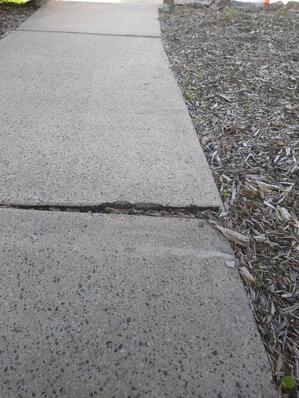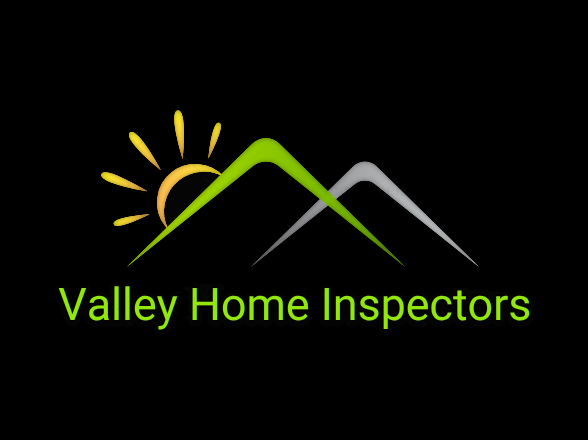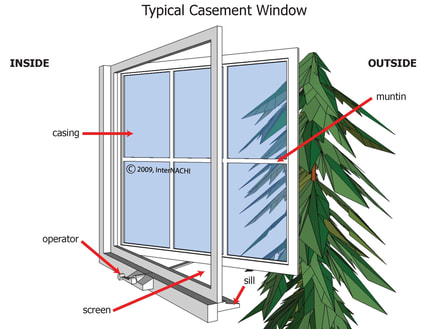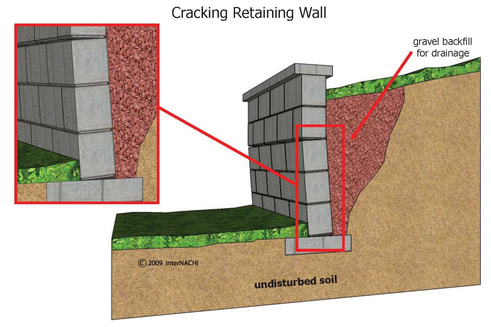Exterior Inspection

During a home inspection the home inspector will most likely start their inspection on the outside of the home. The exterior inspection is broken up into many categories. These categories include siding, windows, doors, trim, landscaping and grading, garage and carports, retaining walls, and around the house. Each of these categories are broken up into sub-categories through the home inspection report.
Siding
For example, there are many different types of siding. Therefore, the home inspector will be looking for different things depending on the type of siding. Types of siding include vinyl siding, metal siding, wood siding, brick and stone facings, brick veneer, clay or slate shingles, stucco, asbestos cement, and asphalt composition. Here is a brief list of what the home inspector is looking for when inspecting different types of siding.
Inspecting wood siding: broken, missing, or loose components, decay and wood rot, nail problems, peeling and blistering paint, buckling, cupping and warping, water penetration at interfaces
Inspecting metal and vinyl siding : interference with moisture release, missing caulking, courses not level, loose and missing planks, bad trim installation, mechanical damage
Inspecting stucco siding : cracks that go through all layers, offset cracks and breaks, water penetration, cracks that hold water, detachment from the wall, exposed lath or chicken wire
Inspecting masonry walls : cracking above openings, deterioration of mortar, bowing, leaning, or distortions
Inspecting brick veneer : detachment or separation of the veneer, bowed or cracking veneer
Inspecting solid brick: cracking in the brick, deterioration of mortar or brick
Doors, Windows, Trim
While inspecting the trim the home inspector will be looking for loose nails, or missing pieces, proper installation, painting and caulking, broken or split pieces, and wood rot.
While inspecting the windows the home inspector will be checking for missing flashing, rotted framing, sagging header, rusted or rotting lintel, storms and screens, loose or missing caulking, discolored or missing glazing.
While inspecting the doors the home inspector will be checking for storm and screen doors, headers, framing, door operation, caulking, and door condition.

Decks, Porches, Balconies
During the inspection of porches the home inspector is looking for safety hazards in railings and steps. They are also checking the roof structure to look for sagging and leaking in roof and ceiling, deteriorating supports, decaying floors.
During a deck inspection the home inspector is looking for floorboard spacing, wood rot, safety hazards on steps and railings, loose fastenings to house, finish stain and treatments, deteriorating supports.
While inspecting a balcony the home inspector is checking for wood rot, water penetration at junction with house, safety hazards on railings and balusters, shaking, tilting and sagging.
Walks and driveways will be inspected for pitting, upheaval, sunken areas, negative slope and trip hazards.
Foundation is inspected to be sure window wells are in good condition. The home inspector is also checking for potential damage to vegetation which is too close to the house. The home inspector is looking for no reverse slope of ground sending water toward the house.
While inspecting retaining walls the home inspector is looking for poor drainage, tilting or bowing, sold too low behind wall, and cracking or deterioration.
Garage and Carport
During the garage inspection the home inspector is performing a thorough inspection of the windows and doors, fire separation, vehicle door and automatic opener, floors, structure, siding and trim.
While inspecting the vehicle doors the inspector will be checking the automatic overhead, swinging, manual overhead and hinge.
Roofing Inspection
There are many components to a roofing inspection. The certified home inspector has a thorough knowledge of the different types of roof materials and will be inspecting each element.
Roof coverings, flashings, water penetration and condensation, roof penetrations, chimneys, and roof drainage systems are some of the areas the home inspector is observing during the inspection of the roof.
When inspecting the roof covering the home inspector is looking at number of layers, approximate age, type of roof covering, remaining useful lifetime, and condition of roof covering.
Here is a list of different types of roofing structures and what the home inspector is evaluating:
Asphalt shingles: nail pops, improper installation, damaged areas, loss of granules, curling tabs, fish-mouthing, cracking and buckling, and loose or missing tabs.
Built-up roofing: blisters and bubbles, water ponding, and alligatoring
Roll roofing: tearing, lifting laps, loss of granules, buckling and wrinkling, repaired areas
Wood shingles and shakes: softness and rot, loose or missing, water penetration, improper installation, damaged and weathered, moss and mildew
Metal: secure seams, paint job, rusting and corrosion, loose sections, prior repairs
Asbestos cement and slate shingles: broken or flaking shingles, loose, slipped, or missing shingles, prior repairs
Tile: broken tiles, prior repairs, loose, slipped, or missing tiles, paint job if present
Single-ply membranes: tearing and punctures, brittleness, poor installation, broken joints
Valley flashings: deterioration, repairs, debris, poor installation, damaged, water penetration
Chimney flashings: loose, torn, or damaged, prior repairs, missing or incomplete, rusted or corroded, water penetration
Roof penetrations: ventilators and fans, piping and vents, skylights
Chimney chases: unlined flue, deteriorating mortar, improper or damaged flashings, settling or leaning, loose, missing, cracked, or spalling masonry, cracked or missing chimney cap
Flue: cracked, joints open, loose mortar, interior soot covered, unlined flue, requirements, rain cap condition, metal chimneys
Downspouts: leaking, missing sections, corrosion and rust, disconnections, clogged with debris
Comprehensive Home Inspections
Competitive pricing, flexible scheduling to accommodate your busy lifestyle!
Valley Home InspectorsLehigh Valley, PA
|
Proudly powered by Weebly



